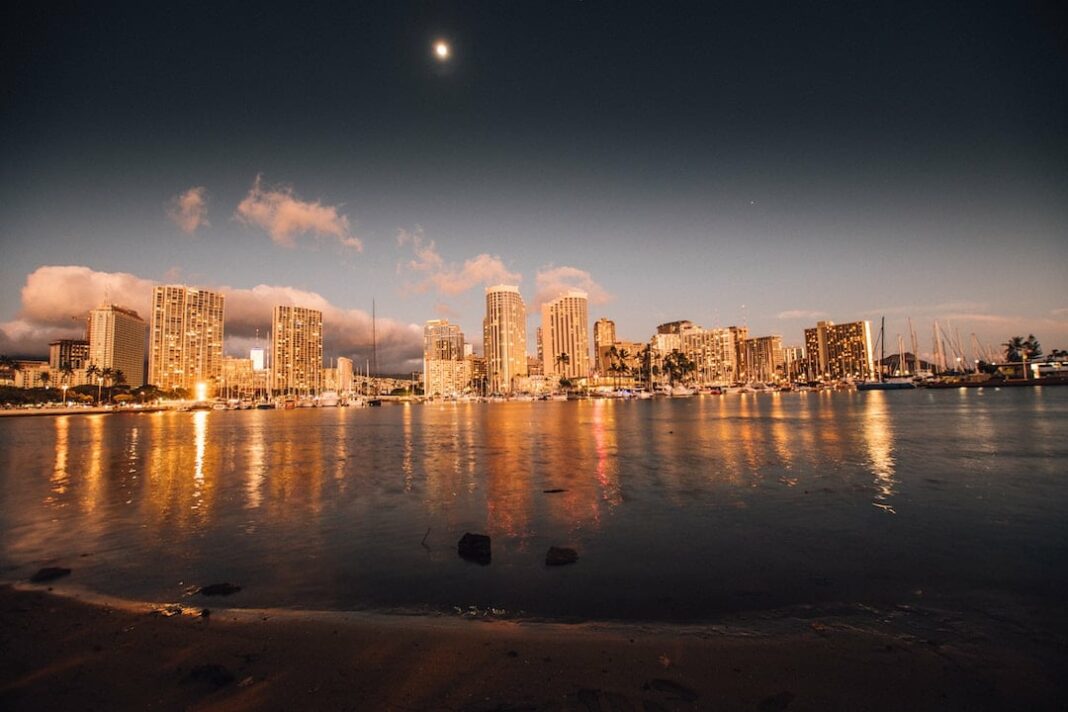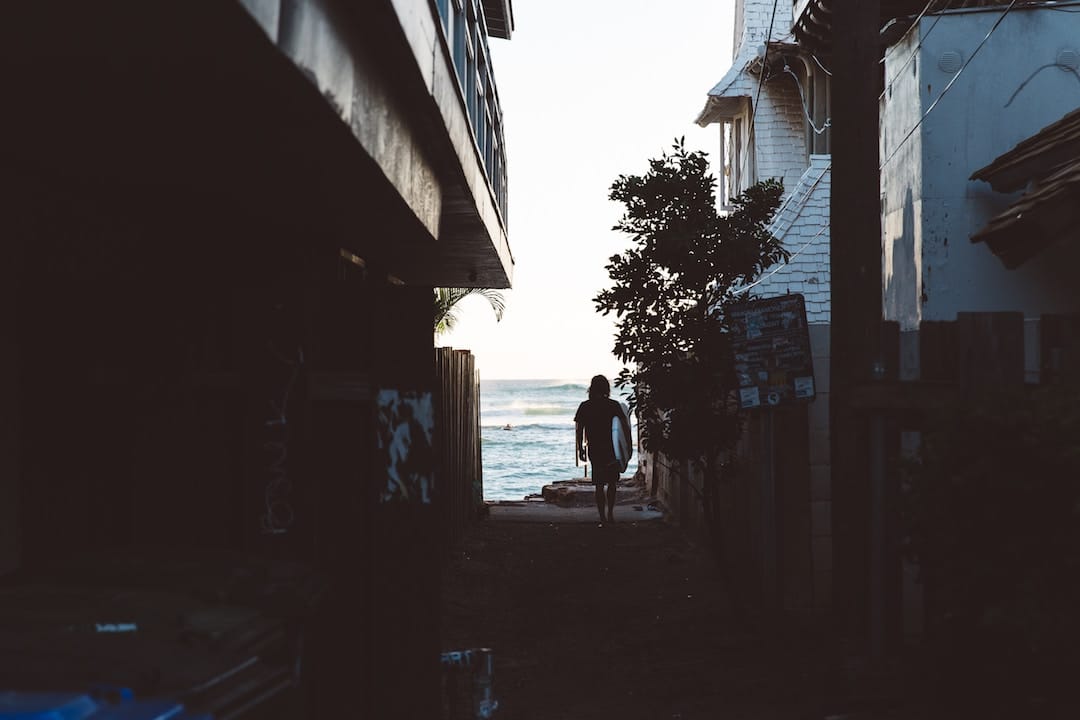Honolulu, Hawaii’s capital city, is home to a bustling business district, the state capitol, and a handful of historic landmarks. But this Oahu city also boasts an incredible arts scene, lots of parks and hiking trails, and a strong sense of community. Here’s everything else you need to know before living in Honolulu.
Cost of Living
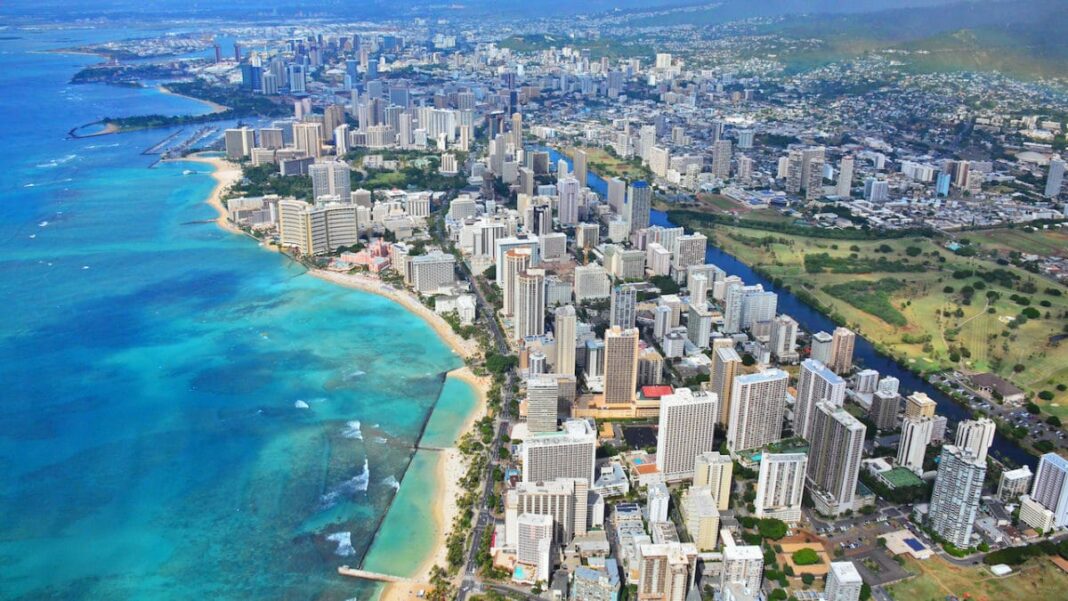
- Rent: the average cost to rent a 1-bedroom apartment is $1,660 and $2,200 for a 2-bedroom. These rates put Honolulu in the top 20 priciest cities to rent in the U.S.
- Transportation: monthly transit passes will cost around $70 on average. We’ll go into more detail on transportation options later.
- Food costs: residents in Honolulu spend 15.4% of their household budget on food, much higher than the national average. Of this food budget, 52.6% is spent on meals at home, and 47.4% is spent on dining out.
- Taxes: sales tax in Honolulu is 4.5%.
Utilities
- Utilities: the average cost of utilities for a 915-square-foot apartment is around $194.
- Hawaii Gas: Gas
- Hawaiian Electric: Electricity
- City & County of Honolulu’s Department of Environmental Services: Garbage and Sewage
- Honolulu Board of Water Supply: Water
- Internet: internet services range from $50-$80. Below are the largest providers in the Honolulu area.
Weather
Not a fan of the winter? Welcome to Honolulu, your dream home. With year-round average temperatures in the 80s and lows in the 70s, you’ve officially entered paradise. Honolulu does have an average of 63% humidity and sees rain about 65 days out of the year, but you’ll never find snow here. Plus, all the humidity and rain keep the vegetation lush so you’ll see plenty of greenery in Honolulu.
Honolulu Neighborhoods
Of course, living in certain neighborhoods can alter your cost of living, so here are a few popular areas that Honolulu residents like to call home.
- Downtown Honolulu: The bustling business epicenter of Honolulu, Downtown is home to Hawaii’s government, the Hawaii State Capitol, and Honolulu City Hall. In addition, Downtown is where you’ll find some of the most historic landmarks like Iolani Place, the Aloha Tower, and the Statue of King Kamehameha I.
- Waikiki: Perhaps the most well-known neighborhood in Honolulu is Waikiki. Along with a huge influx of tourists, Waikiki is dotted with high-end shopping, upscale restaurants, and waterfront cocktail bars. Waikiki offers ample entertainment, with the Honolulu Zoo, Waikiki Aquarium, and Ala Wai Golf Course sprinkled throughout the neighborhood.
- Kakaako/Ala Manoa: This neighborhood just south of Downtown Honolulu boasts a hip art scene and major entertainment venues like the Neal S. Blaisdell Center, the Hawaii Opera Theater, and the Honolulu Museum of Art Doris Duke Theatre. Check out the street art and murals painted on old, run-down warehouses in Kakaako.
- Fort Shafter/Moanalua: Military personnel and their families are partial to this neighborhood for its proximity to Fort Shafter Army Base. Moanalua Gardens, a 24-acre park known for its annual hula festival, is in this hood, as is the Moanalua Valley (Kulana’ahane) Trailhead.
- Manoa: Home to the University of Hawaii and many residential areas, Manoa is the perfect place for families and students alike. It’s situated just north of Waikiki and Ala Moana and is sandwiched between PUʻU ʻUALAKAʻA State Wayside Park and Waʻahila Ridge State Recreation Area.
Don’t Miss
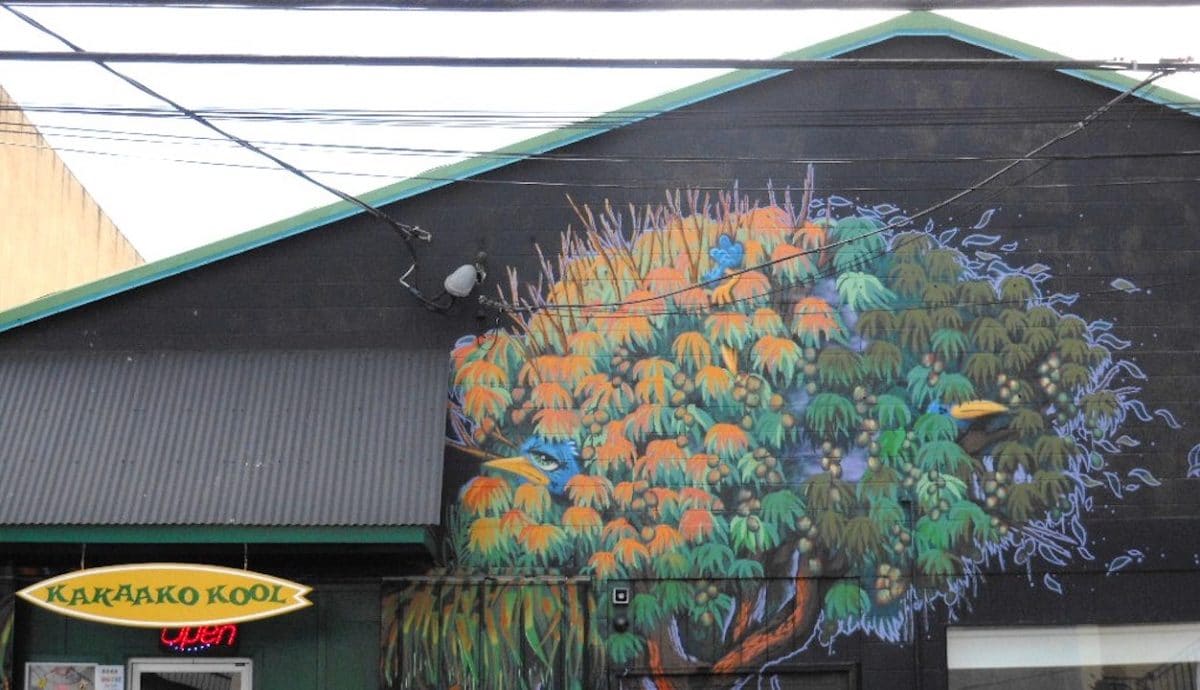
The artist collective, Pow!Wow!, has painted murals and street art all over Kakaako, so take a stroll through the neighborhood and check out the dilapidated warehouses-turned-art. Head to the North Shore of Oahu and check out Laniakea Beach; go in the morning and get a glimpse of the sea turtles that inhabit the North Shore. Take a craft beer tour through Kakaako and hit up some local breweries like Honolulu BeerWorks, Home of the Brave Brewing Company, and Aloha Beer Company.
Transportation
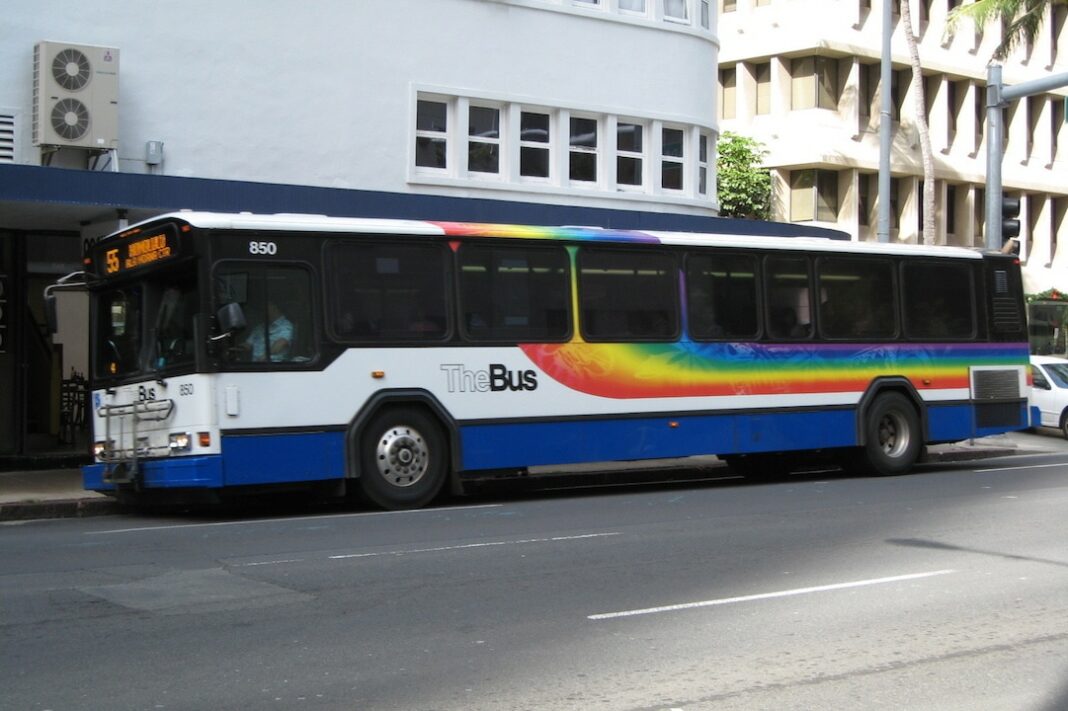
Honolulu doesn’t have a train or light rail system, but it does have a bus system simply called The Bus. It offers service seven days a week and you can get to most places throughout Honolulu via The Bus. It’s also worth noting that a car would be very helpful in some parts of the city. Think about where your apartment and work will be, plus what you plan to do in your free time, and consider whether or it’s worth it to ship your car to Hawaii or buy one when you arrive.
How to Get to Honolulu
Hop on a flight and head to Daniel K. Inouye International Airport, Honolulu’s airport. Positioned in between Asia and North America, Honolulu is on the island of Oahu, and a flight is the only realistic way to get there. Consider peak tourist season and how that will affect flight prices before you jump at the first price you see. From the airport, book a shuttle or grab a taxi once you arrive.
Relocating to Honolulu from California
Californians have the advantage of already being fairly “close” to Honolulu, at least compared to other U.S. states. A flight to the island will take around 6-7 hours, depending on where you’re coming from. Keep in mind Honolulu’s year-round humidity and warm weather, and pack your summer clothes!
Tips for Moving to Honolulu

- Do: mark your calendar for the Aloha Festival. Aloha Week comes around every September, and there are plenty of festive you won’t want to miss.
- Don’t: move to Honolulu without a job. Honolulu’s cost of living is expensive, and it might be more difficult than you’re imagining to snag a good job once you get here. Prepare ahead of time so you know you’ll be able to pay the bills when you arrive.
- Do: attend the annual Hawaiian Slack Key Guitar Festival on the Waikiki Aquarium grounds. Enjoy six hours of musical entertainment, stroll through the arts and crafts area, and get some grub from local food vendors.
Honolulu is bursting with outdoor recreation, upscale shopping, and beaches galore. Who wouldn’t want to call this place home? If you’re ready to be a resident, then get started by finding that perfect Honolulu apartment and the you’ll be saying Aloha in no time.

